Makita vs Milwaukee – which brand is better? [2024]
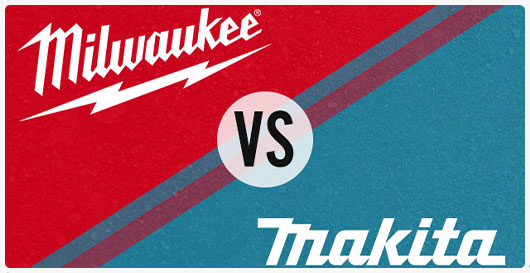
Makita and Milwaukee tools are two of the most prevalent power tool brands in the UK, especially for professional or industrial users. This piece is broken down into two parts covering multiple sections including:
The first part looks back at how it all started for both companies, with the second part ultimately identifying… which brand is better?
History of Makita
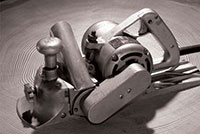
The First Makita Power Tool
Makita was founded in 1915, in Nagoya – an industrial city in Japan. The business originally sold and repaired light fixtures, motors and transformers. The very first Makita power tool was produced over forty years later, in 1958 – a hand-operated electric planer. This was the start of a new direction for Makita, transforming them into an electric power tool manufacturer.
The brand didn’t arrive in the UK until 1972 and the following year, DIPT Protrade became an official distributor for Makita power tools. Nearly fifty years later, Makita remains a key brand for Protrade, in terms of both a healthy stockholding and customer support – underpinned by our official status as a service and warranty repair agent.
After 10 years of design and testing to ensure quality, Makita introduced its first 7.2V Cordless Drill in 1978.
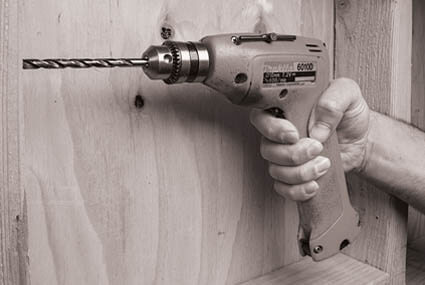
Makita’s first 7.2V Cordless Drill introduced in 1978.
Significant investments in research and development resulted in increased power and run time, shortened charging time and longer tool life. These same attributes would become hallmarks of Makita cordless tools.
By 1987 Makita’s line-up of 7.2V cordless consisted of 15 different tools that all used the same battery and charger. A 9.6V line-up was made up of 10 tools.
Makita created the 18V Lithium-Ion category in 2005 and today offers the world’s largest cordless tool line-up powered by an 18V slide-style battery.
As of 2021, Makita operates 123 sales and service bases in Japan, augmented by overseas bases in nearly 50 countries, while selling products in some 170 countries around the world.
History of Milwaukee Tools
Milwaukee started in the same decade as Makita, under the name A.H. Petersen. Automotive tycoon,
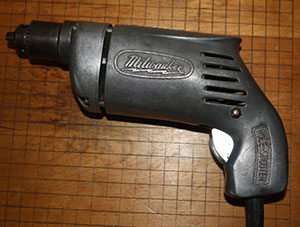
Henry Ford was looking for a fabricator to produce a compact, lightweight, and portable power drill. A.H. Petersen had been producing tools and dies for the Ford Motor Company for many years, and created the ‘Hole-Shooter’ – the very first one-handed drill capable of handling heavy-duty workloads. Unfortunately, in 1923, a devastating fire followed by a deep recession, caused A.H. Petersen Company to close its doors.
The following year Petersen’s business partner, A.F. Siebert, bought the company’s remaining assets at auction – and in 1924, Milwaukee Electric Tool Corporation was founded – named after its city of origin in the U.S. state of Wisconsin.
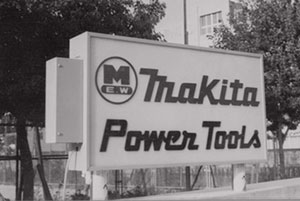
Makita started its global expansion in the 1970s, opening up subsidiaries in numerous countries around the globe, establishing the brand as a serious ‘player’ in the professional power tool market. Milwaukee on the other hand focussed on its own North American market and didn’t really become ‘known’ outside the United States, until the turn of the millennium.
After being bought and sold by a couple of investment groups in America, Atlas Copco – a Swedish tools and equipment producer, purchased Milwaukee Electric Tool Corporation in 1995. The company already owned AEG Electric Tools and planned to keep Milwaukee’s ‘Nothing But Heavy Duty’ image as their premium power tool offering. Milwaukee tools were officially introduced to Europe in 2002, at the International Hardware Fair in Cologne, Germany.
Atlas Copco ‘persevered’ in the professional power tool market for two more years, but in 2004 announced plans to sell its electric tool business – citing a lack of synergy with their other business interests and being ‘far’ from their desired position of number one or two in its markets worldwide. Interestingly, this was a position Makita undoubtedly filled at this time.
It didn’t take long for a buyer to step forward, and in 2005, both the
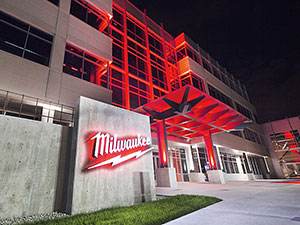
Milwaukee and AEG brands – along with their global manufacturing facilities, were snapped up by Techtronic Industries (TTI) – a fledgling business with big aspirations.
Established in 1985, TTI started out as an OEM manufacturer for a number of significant organisations, but soon realised that owning their own brands was the way forward. Before purchasing Milwaukee and AEG, they’d already acquired a number of other well-known brands including Vax, Ryobi, Homelite, and Dirt Devil.
The plan was to ‘corner’ the entire power tool marketplace, with a multitiered approach, utilising three of their most prominent brand names:
- Ryobi for DIY and home users
- AEG for trade and professional users
- Milwaukee for heavy-duty industrial users.
The concept was a sound one, and overcame issues that traditional power tool companies had always struggled with…
“How do I capture different levels of the market without confusing my customer?”
By having three separate brand names with three completely different colours and three distinct performance levels – there was absolutely no chance of confusion.
Power tool manufacturers often make assumptions that their users will know the difference between various tools in their range…even with over thirty years experience, I struggle! As I write this article, Makita has seven 18V Combi Drills in their current range… DHP453, DHP458, DHP481, DHP482, DHP483, DHP484 and DHP485 – same brand name, same colour… but very different performance capabilities.
Milwaukee on the other hand, has just three 18V Combi Drills in their range, and these are even sub-branded for clarity – see Milwaukee cordless range explained.
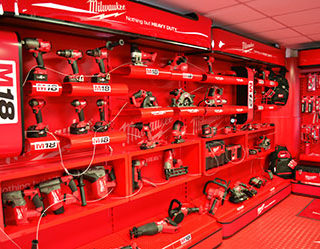
The high-end brand position and simplistic approach alerted the Milwaukee power tool brand to Protrade – the synergy between the two companies was too similar to ignore. In 2011, Milwaukee was introduced into our product portfolio and has grown to become our second-biggest-selling brand – after Maxitek. Like Makita, customer support is also reinforced by our official status as a Milwaukee service and warranty repair agent.
We’ve briefly covered the history of both Makita and Milwaukee – and also touched on their branding positions… but which one is better?
Makita vs Milwaukee Tool Verdicts
There is no short answer to the question ‘which brand is better?’ – so I’m going to break the ranges down into categories and even sub-categories.
-
- Corded Tools and Equipment
- Outdoor Power and Equipment
- 12V Cordless Tools
- 18V Cordless Tools
- Higher Voltage Cordless Tools
Makita vs Milwaukee: Corded Tools and Equipment
Makita
We’ll start with corded tools and equipment… and Makita’s range is quite frankly ‘mind-boggling’! Virtually every conceivable power tool you can think of is featured – the range is vast and most items are available in both 240V and 110V for site use.
Makita started out as an electric motor manufacturer, so it should be no surprise that their heritage remains in place to this day.
Premium-grade materials and components are used to produce their motors, with 19 extensive tests performed on each one prior to leaving the factory.
Milwaukee
Milwaukee on the other hand, has a limited corded range of tools – and it seems to be shrinking! Predominantly featuring
large hammers and breakers, with a spattering of saws and grinders… that’s pretty much it! By their own admission, Milwaukee have decided to focus on battery-powered tools, so the corded range will only get smaller as cordless alternatives are launched.
Verdict
The Milwaukee corded range is excellent, especially the large hammers – no doubt inherited when Kango was filtered into the Milwaukee range back in the Atlas Copco days. Purely based on an incredible range of products, you’d have to lean towards Makita for a complete corded offering though.
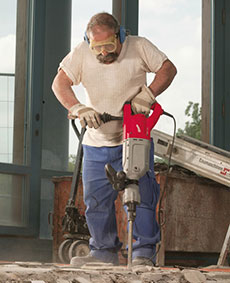
Milwaukee inherited the Kango brand
Makita vs Milwaukee Price
On average, Makita power tools are around 10-20% cheaper than Milwaukee’s, however, this should not necessarily reflect your purchasing decision.
Milwaukee has always focused on creating the most durable and toughest power tools within the industry, which is why this has made them the go-to power tools for woodworkers and construction workers worldwide.
That being said, Makita has branded itself as a quality brand with affordable prices, which makes them popular with many homeowners.
The verdict? Well, it depends on your budget and what kind of tool you’re looking to use it for. If it’s a long-lasting, high-quality power tool you’re looking to use heavily then the verdict would be, Milwaukee!
Makita vs Milwaukee: Outdoor Power Equipment
Makita
Makita invested heavily in the outdoor power equipment market, back in 1991, with the acquisition of Dolmar – a very high-quality German manufacturer of petrol-powered gardening, forestry, and agriculture equipment.
Although the original Dolmar name was retained in a handful of European countries, notably where they had a brand presence, it was re-badged Makita in the UK. In 2008, the combined knowledge of Dolmar, Makita, and Japanese engine manufacturer Fuji Robin, created a brand new user-friendly and affordable 4-stroke engine.
Compared to traditional 2-stroke, the new 4-stroke MM4 engine increased power output by up to 30% and reduced emissions by an astonishing 90%.
Milwaukee
Milwaukee has never produced petrol-driven tools or equipment but has recently ventured into a battery-powered alternative called MX FUEL – more about this later.
Verdict
For petrol-driven tools and equipment, there can only be one winner… Makita.
Makita CXT vs Milwaukee M12: 12V Cordless Tools
Makita
Makita recently upgraded its sub-compact battery from 10.8V to 12V. The new 12V Lithium-ion ‘slide-on’ battery has multi-contact terminals to ensure a more stable contact, even under extreme work or vibration conditions.
Milwaukee
The Milwaukee M12 range has featured the same style of 12V Redlithium-ion ‘clip-in’ battery since its inception, meaning all tools are both backward and forward-compatible – i.e. old batteries fit new machines and vice-versa. With over 90 tools on the single M12 platform, the options are considerable… from power tools to lighting solutions and heated clothing.
Verdict
Many of the tools within the two ranges have similar performance levels, but when you get to the top-of-the-range Milwaukee 12V tools – sub-branded M12 FUEL – there’s an obvious performance improvement. Add to the mix a much more extensive sub-compact range, with multiple capabilities – I’d go for Milwaukee M12.
In truth; many items within the Milwaukee M12 range could easily rival competitors’ 18V tools!
Makita LXT vs Milwaukee M18: 18V Cordless Tools
Makita
Without a doubt, 18V is the most popular battery platform sold globally. Makita made a decision to develop a ‘fully-fledged’ 18V Lithium-ion cordless platform in 2005, increasing the range to over 150 machines within just ten years and currently featuring over 225 tools.
It was a bold step, that has proved to be crucial in establishing and maintaining Makita as one of the biggest-selling brands within this category.
Milwaukee
Milwaukee was the very first power tool brand to launch Lithium-ion battery technology, just a few months earlier than Makita – with their V18 range. Research and development had been carried out by Atlas Copco, but lack of market share stifled early growth. Following the takeover by TTI, and just three years after launch, the first generation V18 Lithium-ion tools and batteries were replaced by the current M18 range. The new platform was not compatible with the old, meaning Milwaukee had in essence returned to the start of its Lithium-ion journey – losing ground on Makita and other industry leaders. Fast forward to 2021, Milwaukee now has approaching 200 items in its M18 range, including some very clever and innovative ONE-KEY ‘smart’ tools. Milwaukee M18 is currently the fastest-growing platform of 18V power tools and equipment… worldwide!
Verdict
We’re comparing arguably the two best 18V platforms available to date when it comes to range and performance. Very much like the sub-compact ranges, both brands offer similar performance levels – until you get to the top of the range M18 FUEL tools. This is where you experience an obvious performance improvement. A simple yet effective feature, Milwaukee added very early in their M18 development, was including a ‘dual’ battery charger with every 18V set. This clever idea opened their users up to both the M12 and M18 platforms – making their offering even more extensive.
Before making a decision on which brand to select, I’d research exactly what tools you require, going for the one that best suits your needs. If you were to push me for a decision, I’d personally go for Milwaukee M18 – but you will only notice the difference with the high-end M18 FUEL tools.
Makita XGT vs Milwaukee MX FUEL: Higher Voltage Cordless Tools
This is a mismatch in truth… we can’t really compare the two battery platforms – you’ll see why shortly. Makita launched their 40V XGT range in 2020, to rival DeWalt 54V XR Flexvolt. The idea behind the new platform was to enable cordless tools to penetrate into areas that had previously been reserved for corded machines. Like the DeWalt 54V series; Makita’s 40V battery is a standalone system and not cross-compatible with their 18V tools.
Milwaukee MX FUEL was officially launched in 2020, but rather than focusing on power tools, the aim was to go after the plant and equipment sector. The initial range featured a 14” cut-off saw, diamond drilling rig, and road breaker… to name just three.
Conversely, the Makita XGT series still featured ‘portable’ power tools – similar types of machines that were already available in their 18V portfolio. Due to having a completely different segment focus, we cannot directly compare MX FUEL with the Makita 40V XGT platform… but Milwaukee does still have a rival! Rather than developing a separate platform altogether, Milwaukee decided to extend its existing 18V range with higher-performing tools and High Output batteries – enabling users to conveniently add on to their existing range.
Verdict
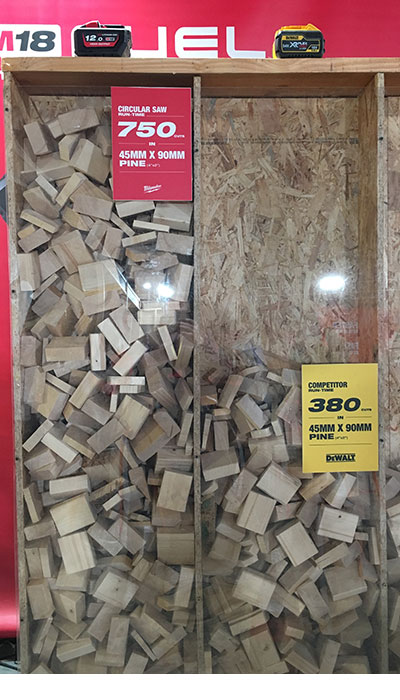
The Makita 40V XGT range of tools are certainly very high performing for extra-heavy-duty applications, but in truth the premium 18V Milwaukee M18 FUEL tools used in conjunction with Milwaukee 18V high output battery cells, are more than comparable. It does beg the question, ‘why create a completely separate battery platform, for very similar tools that already feature in an already successful and widely used range’? To be fair, we’ve not directly compared the new Makita XGT with Milwaukee 18V High Output tools, but earlier tests versus DeWalt 54V had the Milwaukee 18V 12.0Ah battery doing nearly twice the amount of work!
It’ll be no surprise that yet again, I’d go for the Milwaukee 18V High Output range for ‘higher voltage’ cordless power tools… and Milwaukee MX FUEL for battery-powered plant and equipment.
Summary
It’s been a ‘clean sweep’ for Milwaukee when it comes to cordless solutions, which is unsurprising as the original TTI business, established back in 1985, was essentially created to produce rechargeable battery packs for use in tools and appliances – it’s their culture and legacy.
My verdicts are in no way a smear on Makita, or any other brand for that matter… they’ve all simply come up against a ‘machine’ that keeps redefining, developing and delivering new technologies and ideas… something the team at Milwaukee call ‘Disruptive Innovation’.
The phenomenal growth of battery-powered tools, often in favour of corded or petrol-powered products, demonstrates that the market is rapidly moving towards cordless solutions. There is no doubt that battery technology is the core competence for Milwaukee, as the brand pushes boundaries to drive a completely cord-free job site.
As a key Milwaukee distributor, I was fortunate enough to be invited to their facility in Brookfield, Wisconsin – witnessing an army of incredibly talented engineers, beavering around an open plan workshop the size of a football field, researching and developing the next ideas that nobody else has even considered. Experiencing first-hand their unwavering drive to establish the Milwaukee brand as number one in the world for trade-focused solutions. When it comes to battery-powered tools and equipment… I for one think they’ve cracked it!
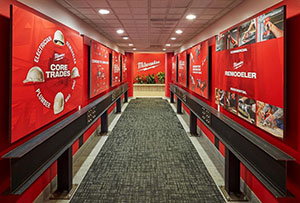
Milwaukee HQ in Brookfield, Wisconsin




